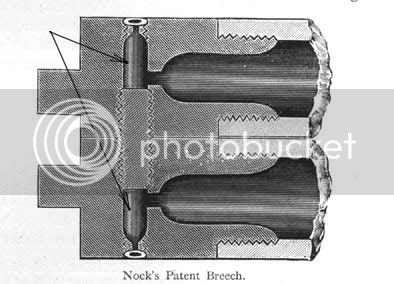Well I guess you gentlemen will have to pardon me. :redface:
Roundball is quite correct.
Thompson Center has called their breeching system a Patent Breech for years and made hundreds of thousands of them so it must be one. :hmm:
They also have produced the "Hawken Rifle" for years and made hundreds of thousands of them too so it must be a Hawken too. :hmm:
I just figured that if people knew the difference between a true Patent Breech and a chambered breech they might sound a bit more knowledgeable when they speak of these things. :hmm:
I must add that when I see the word "Patent" I expect their to be one and the chambered breech has none.
Now, there is a true "Patent Breech" that is owned by Ardesa. In it the drum or a similar part with a touch hole in it, screws thru the side of the breech plug threads firmly locking the breech plug in place.
Many owners of CVA and Traditions guns have found that their guns truly have this "Patent breech".
Anyway, as you folks know, I am a picker of nits. A nitpicker, if you will.
We each have our own faults. Hopefully you can forgive mine.

PS: Roundballs comments about the common mis-usage of the term Patent Breech makes me wonder what kind of patent breech he ended up paying is money for? Could it be just a simple smallish hole connecting the vent to the powder chamber or do his guns actually have Nock's Patented powder chamber between the vent and the main powder chamber?








